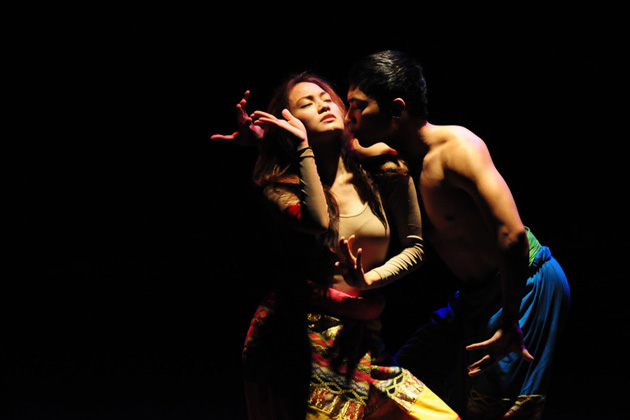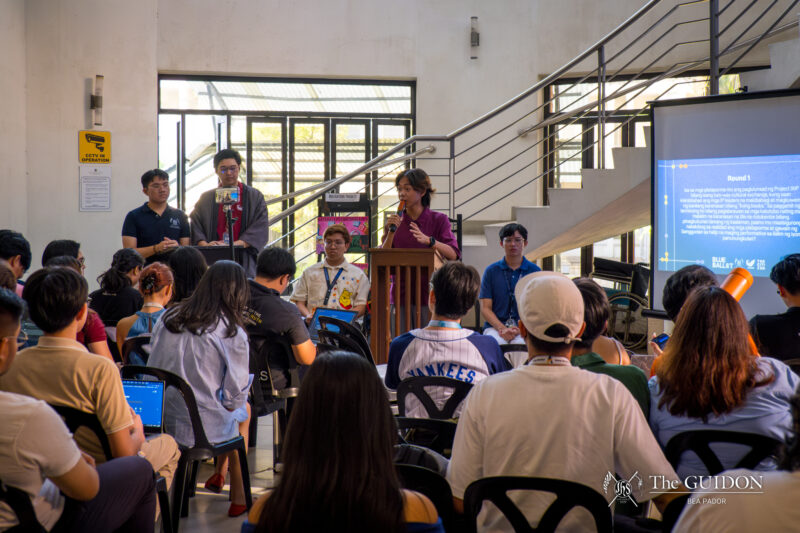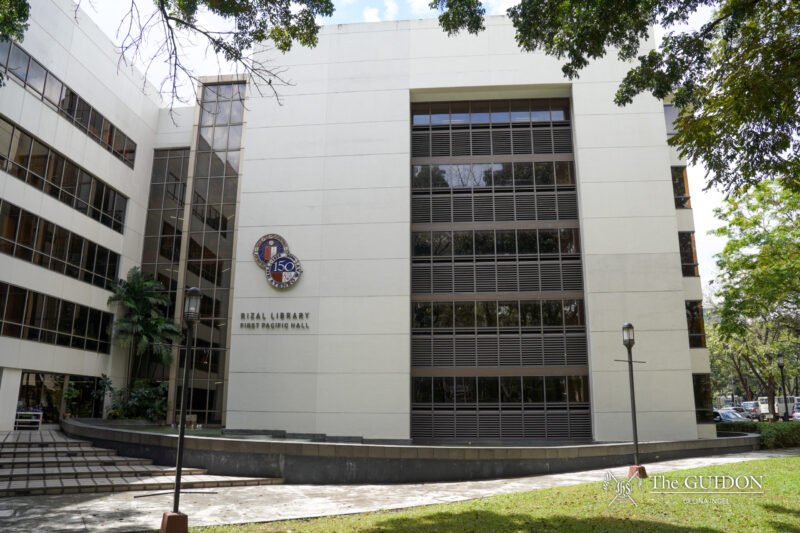
SPECIAL CONNECTION. Sintang Dalisay heavily incorporates Filipino elements that establish a cultural connection with the Filipino audience. Photo courtesy of Tanghalang Ateneo and Ateneo Fine Arts
TANGHALANG ATENEO’S (TA) Sintang Dalisay ranked second in the Competition Programme of the 9th Teatralny Koufar International Student Theater Festival.
The said festival was held at the Belarusian State University in Minsk, Belarus from July 2 to 6. Three hundred delegates from 32 countries attended the event.
Held at the Trade Union Palace, the performance gained a standing ovation from the audience.
“Our play moves people emotionally more than the other plays,” said Ricardo Abad, sociology professor and the director of Sintang Dalisay. He was also behind the play’s artistic direction and has been TA’s moderator and artistic director since 1984.
Sintang Dalisay is a Filipino adaptation of William Shakespeare’s Romeo and Juliet using an awit written by G. D. Roke in 1903.
In the competition, the Philippine production tied with that of France at 8.7. The Lithuanian production received the highest mark of 8.8.
Audience members could rate each performance from one to 10, with 10 being the highest. Voting was optional and the number of voters was not revealed.
The 9th World Congress of the International University Theater Association was held concurrently with the festival.
The different productions in the festival showcased the congress’ theme of “Traditions, Research, Experimentation: The Essential Elements of Contemporary University Theater.”
The other participating countries were Bulgaria, China, Georgia, Russia, Ukraine, Uruguay and the United States. Belarus also presented two productions as intermissions throughout the event.
Theatrically different
Abad said that the experience was “gratifying” because he felt that the people involved in the play and the work put in it were valued by the audience.
“We get to realize the importance of valuing and working with our cultural traditions that we realize that theater in the Philippines is not only song and dance or Broadway musicals, but it can also be other kinds of theater that can also be appreciated,” he said.
“I say it is one sign of the impact of the production because many of the trips we made outside—we did not seek for them, they were sought from us,” Abad added.
In an earlier interview with The GUIDON, Abad noted that the performance was scheduled on the last day of the festival, which meant that it was deemed one of the best from the participating countries.
TA Company Manager Mirick Paala said that the appreciation of the Ateneo and the global crowd was “overwhelming.”
“Fulfilling”
“[The experience] was very fulfilling. I’ve always wanted to travel and perform at the same time. So, when the opportunity came up, I really grabbed it and we really enjoyed ourselves especially since we got to meet other theater people,” said Tasha Tañada, who played the female lead role, Jamila.
Kalil Almonte, who played the male lead role, Rashiddin, said, “Kahit after the show na (Even after the show), they were approaching us, taking pictures, getting our contact details, wanting, requesting for a copy of the performance itself.”
Aside from Almonte and Tañada, the other actors who were part of the team sent to Belarus are: Joe-Nel Garcia, who played Badawi; Brian Sy, who played the role of the Imam; and Cindy Lopez, who portrayed the character of Gng. Kalimuddin.
Two musicians, Dan Liamco and Jayson Gildore, also accompanied them. Every delegate was from the Ateneo except for Gildore, who is from the University of the Philippines.
The choreographer of the production was Matthew Santamaria, who has been a choreographer for TA for five years, while John Mark Yap served as the stage manager. Abad and Yap came with the team to Belarus, with Abad doubling as a musician and taking up cameo roles.
A cultural connection
“[You] should see this play because it’s everything from music to dance to the language that was a cultural heritage,” said Ia Solis, who played Jamila in the recent on-campus productions.
“Everyone knows the timeless tale, and this one is really unique, in a sense, because it’s appropriated to the Filipino.”
Almonte said, “All aspects of the theater really worked together to build and to create this magic.”







